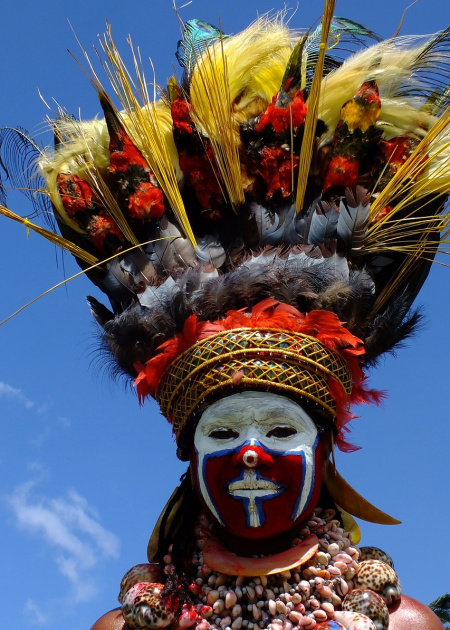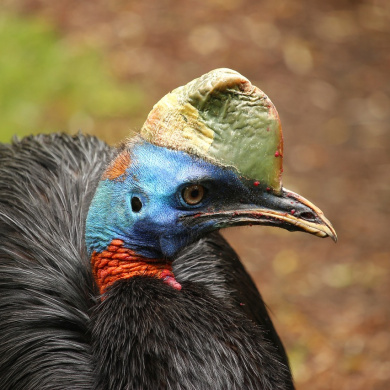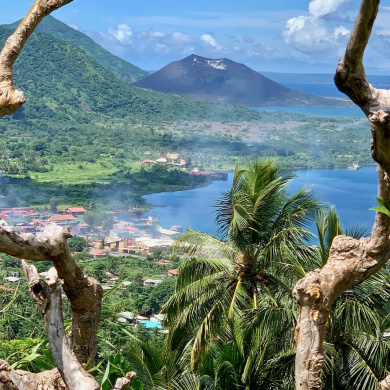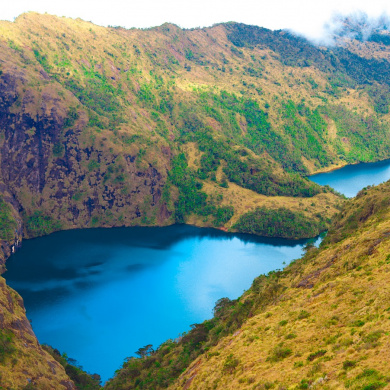Why travel to
- Rich Cultural Heritage: Papua New Guinea is home to a very diverse and traditional culture, with over 800 languages still spoken throughout the island making it one of the most culturally diverse countries in the world. From traditional music and dances to colourful festivals and markets, Papua New Guinea provides a truly unique insight into the ancient and modern culture of Melanesia and the South Pacific.
- Spectacular Wildlife: Papua New Guinea is home to a wide variety of wildlife, including rare birds, flying foxes, tree kangaroos, and other unique animals. The country is a great destination for wildlife enthusiasts, birdwatchers, and nature lovers looking to explore some of the world's most untouched and stunning rainforests.
- Outdoor Adventure: Perhaps one of the greatest draws of Papua New Guinea is its incredible opportunities for outdoor activities. Not only does the country have some of the world's best scuba diving and snorkelling spots, but the rugged and untamed terrain also offers some of the best hikes, expeditions, and treks in the region.
- Local Cuisine: Papua New Guinea provides visitors with the opportunity to enjoy some of the culinary delights of the South Pacific Islands. The cuisine is a traditional mix of fresh seafood, exotic fruits, and local spices that come together to create some truly delicious dishes.
- Unique Shopping Experiences: Shopping in Papua New Guinea provides visitors with an unique insight into the local culture and traditions. From traditional artefacts and souvenirs to handcrafted jewellery and amazing art, markets and shopping spots around the country provide visitors with lots of opportunities to find unique and exciting items.
Cost of living
The cost of living in Papua New Guinea varies greatly depending on a person's lifestyle and location. Prices for goods and services vary significantly between the main urban areas and the smaller rural towns and villages. Basic necessities such as food, clothing, and shelter tend to be less expensive in the rural communities. They also tend to cost more in the urban centers due to higher demand and access to better quality goods. The cost of living in Papua New Guinea is generally lower than in Western countries, but it can still be quite expensive for some individuals.
Safety
Travel to Papua New Guinea can be dangerous due to civil unrest, tribal disputes, the prevalence of gang violence, and other security concerns. The U.S. Department of State recommends travelers exercise increased caution when visiting the country and reconsider travel to certain regions. Additionally, visitors should be aware of the risk for illnesses such as malaria and typhoid, as well as potential exposure to animal attacks, hazardous terrain and other natural disasters.
Places to visit
- Kokoda Track – This is one of the most famous hiking trails in the world, with over 96 miles of stunning terrain in Papua New Guinea's ruggedly beautiful highlands. It is a challenging but rewarding experience, with beautiful views along the track of remote valleys, gorges, mountain peaks and the dense jungle.
- Tari Valley – This stunning location in Papua New Guinea's Southern Highlands Province is home to the Huli Wigmen, who are renowned for their stunning ornamental hats. Explore the vibrant culture of the locals and witness their amazing tribal dancing.
- Mount Hagen – This is the highest peak in Papua New Guinea, standing at an impressive 3,753 metres. If you're seeking an adrenaline rush, be sure to hike the challenging trail up to this stunning summit for jaw-dropping views of the country's volcanic landscape.
- Rabaul – Found on New Britain Island, this is one of the main ports of Papua New Guinea. Explore the former German and Japanese influences in the area by visiting its historically-significant sites. It is also home to some stunning black sand beaches, a wild volcano and sunken shipwrecks.
- East New Britain – Found just off the eastern coast of the mainland, East New Britain is a must-visit location in Papua New Guinea. Surrounded by the majestic Bismarck Sea, this area is home to some of the country's most spectacular coral reef sites, including Kimbe Island and Bitapaka Beach. Explore the vibrant culture of its locals and take a boat tour around the stunning archipelago.
Food to try
- Laksa: Laksa is a traditional dish found throughout Papua New Guinea. It's a spicy soup made with noodles, fish, vegetables, and herbs.
- Lap-lap: This traditional dish is popular in New Britain, an island off the coast of Papua New Guinea. It is made from grated vegetables such as sweet potato and taro, which is then combined with coconut cream and lumpfish. This dish is usually served with one type of seafood and accompanied with seasonal vegetables.
- Chicken Pot Pies: Popovers filled with chicken, vegetables, and traditional spices, these chicken pot pies are often found at roadside stands throughout Papua New Guinea.
- Umu: An Umu is a stone oven in which traditional Papuan foods are cooked, such as root vegetables and pork. The umu is dug into the ground and heated by burning wood or banana leaves. The food is wrapped in leaves, dampened with water, and left to steam in the umu.
- Sago Porridge: Sago is a starch made from the pith of sago palm trees. It is often cooked with coconut milk to make a porridge that's eaten throughout Papua New Guinea. Sago porridge is most commonly enjoyed as a breakfast dish.
Souvenirs
- Wooden Mask: A vivid hand-crafted mask made from kwila and sago palm to represent animal and bird-like faces used in ceremonies.
- Shell Jewelry: Attractive shell necklaces, bracelets and earrings to embody the colours of the sea and celebrate the prosperity of the island.
- Textile Art: Brightly decorated handwoven fabrics featuring vibrant colours, symbols, and images that make great home decorations.
- Soap Carvings: Hand-carved soaps in the shapes of animals, trees, and abstract designs as a beautiful addition to any bathroom.
- Boomerangs: Traditional wood boomerangs, sometimes painted with symbols, are meaningful to the local tribes.
- Wooden Bowls: Carved from a single piece of wood, these intricate bowls make beautiful additions to any kitchen décor.
- Fish Traps: Traditional woven fish traps in the shapes of squares and stars, a long-standing island tradition.
- Pig Tusk Necklace: Worn by both men and women as a sign of wealth or status due to their rarity and beauty.
- Bags: Hand-woven bags featuring the unique crocheting style of the island.
- Akwesasne beadwork: Special jewellery and clothing featuring traditional Akwesasne bead patterns.




